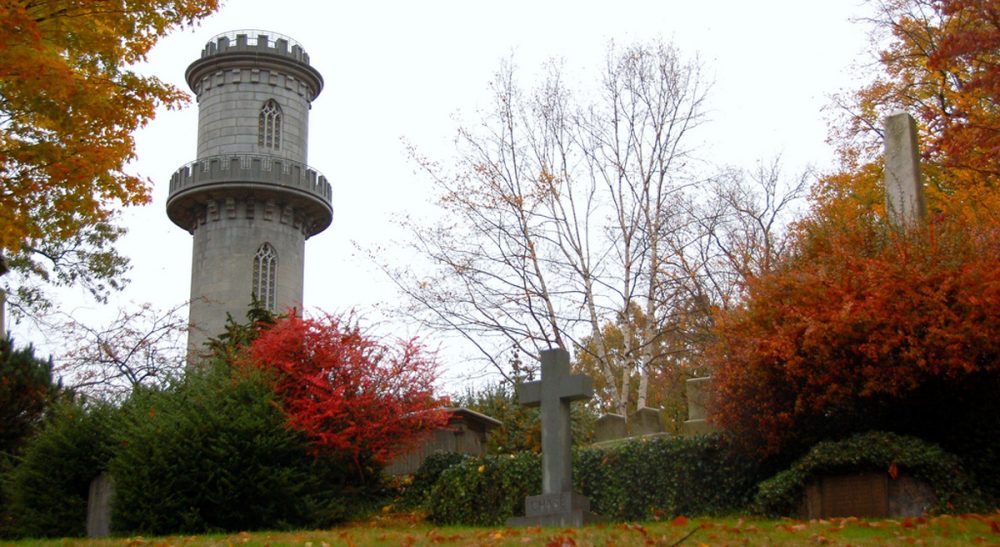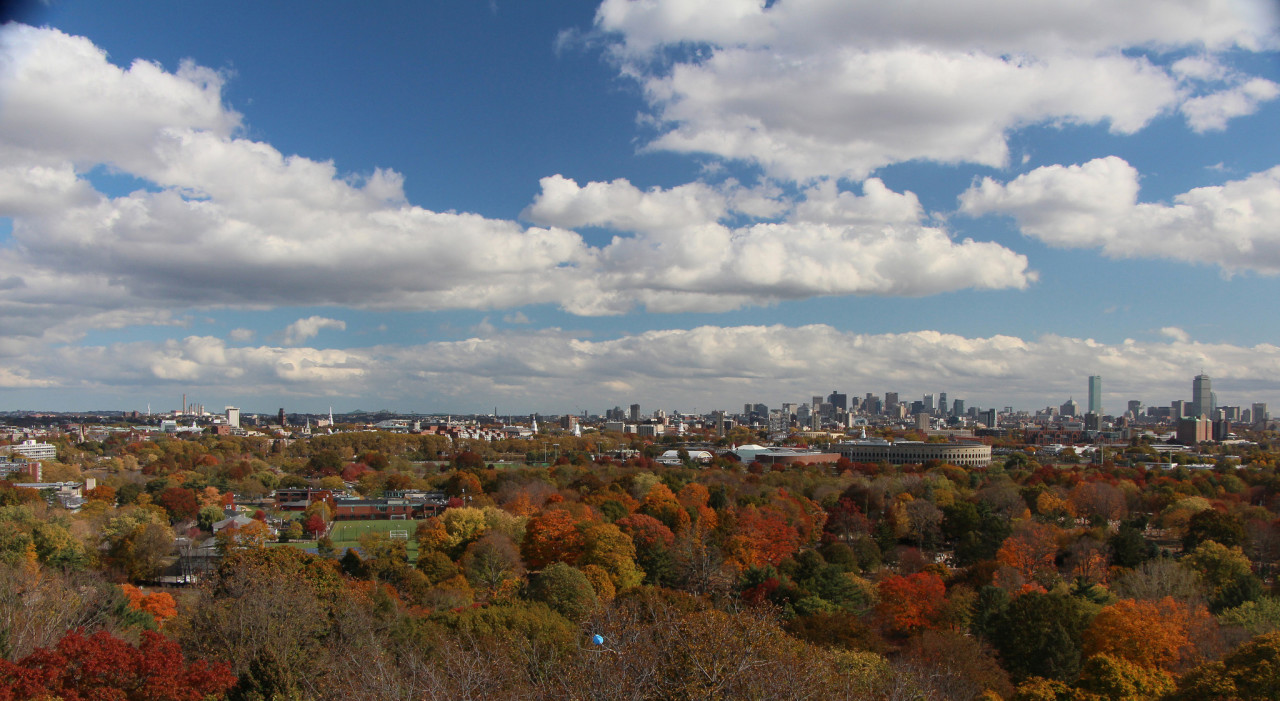Advertisement
What Will We Leave Behind? The Changing Landscape Of Innovation

I took a walk with a friend through Mount Auburn Cemetery in Cambridge last weekend to enjoy summer’s long days and pleasant weather. Some of the cemetery’s most striking features are directly descended from retreating glaciers: Consecration Dell is a kettle pond; Indian Ridge Path follows an eskar; and Tower Hill is a kame. The picturesque hills, the mammoth specimen trees, winding paths, manicured gardens and ornately carved stones look like they’ve been there forever. But they haven’t. The cemetery’s landscape was embellished by extensive earthwork and ambitious plantings to create a 19th century vision of perfect harmony between nature and man. A vision engineered to look like eternity.
When we climbed Washington Tower to take in the view, our first impression was of Boston as a city of trees. Except for the high-rise spine that stretches from the Financial District through Back Bay — a man-made esker, if you will — the view from a few hundred feet up is of undulating green, punctuated by steeples and the occasional tall building. Like the cemetery itself, the tree canopy gives a naturalistic veneer to a heavily engineered landscape.
Civil Engineering -- creating the land, water and transit ways that define cities today -- reached its heyday in the 19th century, when our desire to reshape the environment was at last matched by our ability to do so.
From Washington Tower’s vantage, Boston’s main attributes appear fixed. The Charles River winds between clear banks, with highways and structures on both sides. The infrastructure of our city, however, is more complex than that ordered image appears. Much of Boston was indeterminate tidal marsh that our forebears shaped into dry land and discreet water paths. They filled in the Back Bay with gravel imported from Needham. Eventually, they solidified the South End and the land where the MIT campus stands, as well. With certainty of purpose, they crafted the face of the city.
Civil engineering — creating the land, water and transit ways that define cities today — reached its heyday in the 19th century, when our desire to reshape the environment was at last matched by our ability to do so. Major construction was not limited to pyramids and palaces; we shaped the neighborhoods where everyday people lived.

Today, our visions are less grand. Perhaps it’s because our processes of construction are more complicated; we have more regulations, more input by neighbors and more environmental concerns. Perhaps it is because, having moved so much earth, there is no joy in moving any more. Probably, it is the logical evolution of a more complex society that yearns for new challenges.
Grand projects are still feasible, but their rewards seem less inspiring. Boston’s Big Dig was on scale with filling in the Back Bay. Instead of building a railroad and leveling gravel hills in Needham, we built the Haul Road and expanded Spectacle Island with the earth we removed. Building a highway beneath the city was more technologically complex than filling Back Bay, but it lacked equivalent civic pizzazz. The Zakim Bridge, the Big Dig’s sole landmark, is visible from Mount Auburn Cemetery’s Washington Tower, but it’s not as majestic as the sweep of Back Bay.
When my friend and I descended the tower, I felt tiny in the shadows of former engineering triumphs. I realized that 200 years from now, Boston will look different than it does today, but not so different than it looked 200 years ago. The fundamental engineering moves that define our city are in place.
Advertisement
Our ancestors’ legacy surrounds us in steel and stone. Our legacy ricochets, invisible, through cyberspace.
As we wandered, our conversation did, too, from the latest apps on our iPhones and starting a new website, to a friend’s minimally invasive brain surgery and Skyping with overseas coworkers. Our ramblings made me realize that contemporary engineering wonders occupy a different scale from civil engineering. We transform our world with tiny things. When we bounce electrons into space, we bypass the need for roads or railways. We don’t have to climb a tower to appreciate today’s engineering because it fits in our hand. Our pocket wonders have reshaped daily life, but ubiquity renders them ordinary. It’s hard to find magic in something that is everywhere.
A climb to the top of Washington Tower made me pause and consider the audacity and gumption that shaped our city. We deserve an equivalent burst of awe when a doctor threads a scope through our arteries, when we see a face we love from the other side of the globe appear live on a screen, even when the Web leads us to a terrific Mexican joint in an unfamiliar neighborhood. But our electronic marvels don’t deliver an inspirational spike on a summer afternoon walk. Our ancestors’ legacy surrounds us in steel and stone. Our legacy ricochets, invisible, through cyberspace.
Related:
